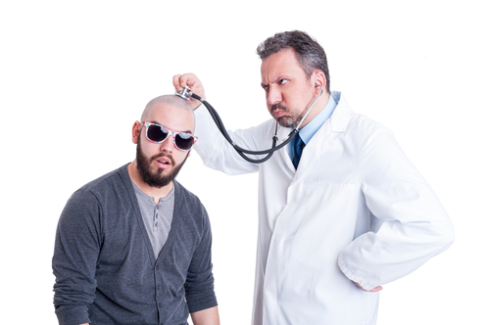5 Ways to Help You Describe Your Pain to Your Doctor
It can be hard to give your doctor an accurate depiction of your pain issue.
But it’s necessary to get the treatment you need.
So, we created this list of five ways you can better describe your pain to your doctor to help prepare for your next visit.
1. Be ready to describe how severe it is.
At your visit, doctors and nurses typically ask you:
- How bad your pain is on a scale of one to ten.
- Whether your pain is mild, moderate, or severe.
- To choose from several or more faces with expressions showing varying degrees of pain.
Coming to your appointment prepared with answers to these questions will give your doctor a clearer picture of your pain issue.
2. Keep a detailed record of your pain.
A “pain journal” is a great way to gather and organize your thoughts into a detailed, accurate pain record.
Here are some questions to consider:
- When did it start? Is it constant, or does it come and go?
- If it comes and goes, what time of day do you feel it? In the night, morning, afternoon, evening, or more than one?
- Does any action like sitting down, laying down, or standing up make the pain better or worse? Does applying cold or heat to the affected area relieve or worsen it?
- Is there any discomfort along with the pain, such as numbness, coldness, or warmth?
3. Choose a few words that accurately describe how it feels.
Ask yourself whether the pain is dull, sharp, throbbing, radiating, or something else. Here are some words for inspiration:
- Aching, burning, cramping, grating, lingering, penetrating, piercing, radiating, searing, scraping, shooting, splitting, stabbing, stinging, tearing, throbbing, tingling, tugging, wrenching, sharp, tender, tight, dull
4. Be prepared to talk about any previous pain treatments.
- Have you tried acupuncture, chiropractic, or any other natural treatments or therapies?
5. Write down everything your pain keeps you from doing.
List all the things you would do in your daily life if pain-free or in less pain. Can you lift objects and twist, turn, and bend freely? Can you climb stairs and stand for extended periods?
Pain Management and Treatment with Kindness
The pain specialist team at Texas Pain Physicians provides friendly, compassionate care — from your first consultation to your last treatment.
If you’re in pain, please visit one of our locations in Dallas, Houston, Irving, or elsewhere in Texas. Give us a call today to schedule your appointment or book online.










